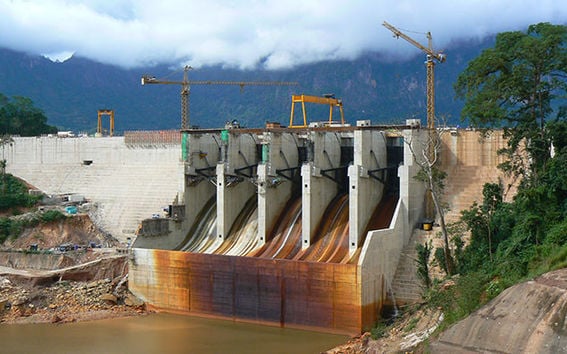Dam construction on the Mekong River poses threat to ecosystems and livelihoods

The Mekong is a river in Southeast Asia, which flows from Tibet through Myanmar, Laos, Thailand, Cambodia and Vietnam into the South China Sea. A total of 70 million people live in the Mekong River Basin.
The area’s population is growing and its economy is developing at a swift pace, which has increased the region’s demand for food and energy. Over the last ten years, electricity consumption has grown on average by 8 percent each year in the area as a whole.
Approximately 40 large dams have been built on the Mekong River to satisfy the area’s growing demand for energy. In addition to this, there are up to 120 dam projects currently being planned.
‘Dams cause significant changes to the Mekong River’s annual flood pulse, which is the foundation for the area's diverse ecosystems and the livelihoods of locals,' Timo Räsänen, D.Sc. (Tech.), from Aalto University explains.
In his doctoral dissertation, Mr Räsänen researched dam construction, climate variability and their impact on the area’s bodies of water. According to Mr Räsänen, the future’s great challenge will be to fulfil the area’s energy demands without simultaneously endangering the productivity of ecosystems, or the areas livelihoods and food security.
Fish and rice
A monsoon climate prevails in the Mekong River Basin. During the wet season, which directly follows the dry season, the surface of the river can rise by up to 10 metres. As a result, flood waters cover large expanses of land and form the basis for the next growing season’s harvest and the productivity of water ecosystems.
Dams are threatening the area’s food security by fundamentally altering the course of river flows. When flooding decreases, the productivity of ecosystems declines.
The Mekong is the world’s largest, inland fishing area, and dams have blocked the normal routes along which fish swim. Fishing is the area’s second most important livelihood, and fish is a significant source of nutrition for locals. For example, 80 per cent of the animal protein consumed by Cambodians comes from fish.
The area’s most important livelihood, rice cultivation, may in some areas benefit from dams. Water from reservoirs can be fed directly to watering systems, which ensure that instead of one, fields produce two or three harvests. However, this necessitates that local farmers have access to water from reservoirs.
Dams also hinder the flow of sediments that contain nutrients. During a natural flood, these sediments spread onto flood plains. Sediments are also important in the formation of the river delta.
Extreme phenomena on the rise
The dissertation demonstrates that the climate’s extreme phenomena – such as extreme aridness and hazardously large floods – have increased during the past decades.
‘The area experienced its last abnormally strong flood in 2011. The flood was so strong it resulted for example in the temporary closing of Bangkok’s airport. The previous year’s dry season had been exceptionally arid. As a result of this aridness, fish catches and rice harvests in the area declined', Mr Räsänen states.
According to Mr Räsänen’s research, climate variation is influenced by an increase in El Niño Southern Oscillation. This in turn is a result of global climate change.
Climate variation analyses in the dissertation were based on an aridity index and statistics on the area’s precipitation and water flow. Additionally, Mr Räsänen used research methods based on trees’ growth rings. On the basis of this research, the types of climate variations that are currently taking place have most likely not occurred for the previous 700 years.
Mr Räsänen has utilised a mathematical model developed by Finnish company YVA Oy to assess the impact of dam projects. The model utilises information on the area’s hydrologic cycle, and its dam and watering projects.
Timo Räsänen, D.Sc. (Tech.), defended his dissertation on 22 August 2014 at the Aalto University School of Engineering’s Department of Civil and Environmental Engineering. The name of his dissertation is Hydrological Changes in the Mekong River Basin – The effects of climate variability and hydropower development.
The online address from the dissertation is: https://aaltodoc.aalto.fi/handle/123456789/49
Contact information:
Timo Räsänen,
tel. +358 40 518 2752, [email protected]
- Published:
- Updated:
Read more news

Get to know us: Associate Professor Maria Sammalkorpi
Sammalkorpi received her doctorate from Helsinki University of Technology 2004. After her defence, she has worked as a researcher at the Universities of Princeton, Yale and Aalto.
Aalto computer scientists in ICML 2024
Computer scientists in ICML 2024
Getting bacteria into line
Physicists use magnetic fields to manipulate bacterial behaviour